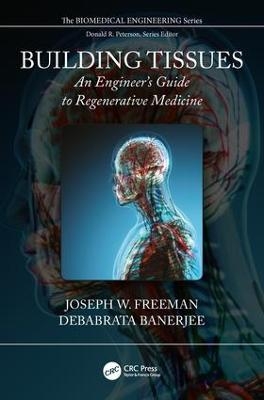
Building Tissues
Crc Press Inc (Verlag)
978-1-4987-4280-1 (ISBN)
Tissue engineering uniquely applies concepts and techniques from biology and engineering in order to heal or produce new tissues after disease or traumatic injury. A successful tissue engineer must have knowledge of cellular biology, cell signaling, extracellular matrix development, and tissue structure and integrate it with the application of stresses and strains, mass transfer, mechanical properties, and heat transfer. In order to train the next generation of successful tissue engineers, this text gives the reader a background in both the engineering and biology associated with tissue engineering.
In reading this text, students will learn about these two different areas of study and how they can be integrated with one another to understand tissues in the human body and solve biomedical problems.
Students will be introduced to definitions of engineering concepts, the practical use of stress-strain relationships, material strength, mass transfer, and heat transfer.
Through examples and problems, students will apply engineering equations to medical and biomedical situations including actual tissue engineering problems.
Students will be introduced to a variety of cell and tissue types and be given the background information necessary to apply the use of cells to the growth and development of new tissues.
Students will learn how to select the proper material for the replacement of a particular tissue and why it is important to know about the mechanical properties and degradability of a material prior to implantation.
Students will learn how the application of force, material selection, and changes in temperature can positively or negatively affect cell behavior and tissue development.
Tissue structure will be described and students will learn about the direct relationship between the structure of a tissue and its properties.
Joseph W. Freeman is an Associate Professor in the Department of Biomedical Engineering at Rutgers University. He has worked in the areas of tendon development, the structure and mechanics of type I collagen, collagen mineralization and mechanical characterization, molecular modeling, soft tissue mechanics, and musculoskeletal tissue engineering. His primary research focus now lie in the design and fabrication of novel, functional scaffolds for the repair of musculoskeletal tissues, the use of novel biomaterials in tissue regeneration, developing therapies for tissue strengthening, collagen molecular modeling, and the use of tissue engineering techniques in cancer research. He has published over 100 papers and delivered numerous conference presentations in these areas. He has taught the first course in tissue engineering at Rutgers for the past seven years. Debakrata Banerjee is an Associate Professor in the Department of Pharmacology at the Robert Wood Johnson Medical Center. He has been an active researcher in tissue engineering and now stem cell technologies over the past twelve years. His focus is on molecular mechanisms that use stem cells, which are proving to be highly beneficial to tissue regeneration. He has published over 150 papers in tissue engineering and regenerative medicine journals.
Tissue Mechanics. Stress. Strain. Mechanical Properties. Mass and Energy Transfer. Convection. Conduction. Diffusion. Tissue Anatomy, Physiology, and Mechanics. Biomolecular Structure and Function. Synthetic Materrials and Fabrication Techniques. Natural Materials. Synthetic Materials. Engineered Structures. Biological Concepts. Cells. Stimulatory Influences
| Erscheinungsdatum | 14.11.2018 |
|---|---|
| Reihe/Serie | Biomedical Engineering |
| Zusatzinfo | 6 Tables, black and white; 100 Illustrations, color |
| Verlagsort | Bosa Roca |
| Sprache | englisch |
| Maße | 178 x 254 mm |
| Gewicht | 657 g |
| Themenwelt | Medizin / Pharmazie ► Physiotherapie / Ergotherapie ► Orthopädie |
| Naturwissenschaften ► Biologie | |
| Technik ► Maschinenbau | |
| Technik ► Medizintechnik | |
| Technik ► Umwelttechnik / Biotechnologie | |
| ISBN-10 | 1-4987-4280-7 / 1498742807 |
| ISBN-13 | 978-1-4987-4280-1 / 9781498742801 |
| Zustand | Neuware |
| Informationen gemäß Produktsicherheitsverordnung (GPSR) | |
| Haben Sie eine Frage zum Produkt? |
aus dem Bereich


